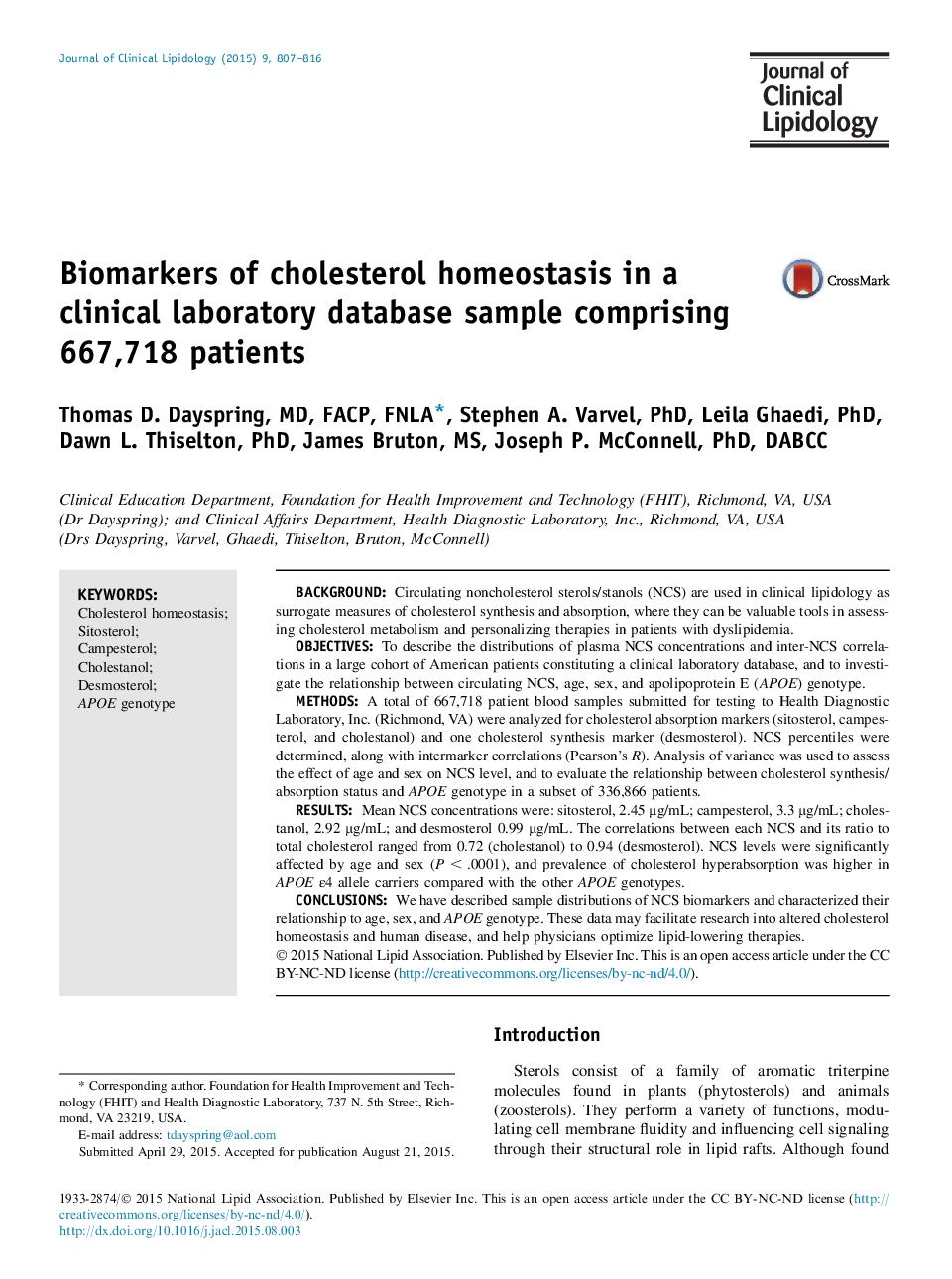| Article ID | Journal | Published Year | Pages | File Type |
|---|---|---|---|---|
| 5985807 | Journal of Clinical Lipidology | 2015 | 10 Pages |
•Large cohort study of a clinical laboratory database comprising 667,718 patients.•Described sample distributions of cholesterol absorption and/or synthesis biomarkers.•Circulating noncholesterol and/or stanol biomarker levels are affected by age and sex.•Levels of cholesterol absorption markers are elevated in APOE ε4 allele carriers.•These data may facilitate clinical research efforts and personalization of therapy.
BackgroundCirculating noncholesterol sterols/stanols (NCS) are used in clinical lipidology as surrogate measures of cholesterol synthesis and absorption, where they can be valuable tools in assessing cholesterol metabolism and personalizing therapies in patients with dyslipidemia.ObjectivesTo describe the distributions of plasma NCS concentrations and inter-NCS correlations in a large cohort of American patients constituting a clinical laboratory database, and to investigate the relationship between circulating NCS, age, sex, and apolipoprotein E (APOE) genotype.MethodsA total of 667,718 patient blood samples submitted for testing to Health Diagnostic Laboratory, Inc. (Richmond, VA) were analyzed for cholesterol absorption markers (sitosterol, campesterol, and cholestanol) and one cholesterol synthesis marker (desmosterol). NCS percentiles were determined, along with intermarker correlations (Pearson's R). Analysis of variance was used to assess the effect of age and sex on NCS level, and to evaluate the relationship between cholesterol synthesis/absorption status and APOE genotype in a subset of 336,866 patients.ResultsMean NCS concentrations were: sitosterol, 2.45 μg/mL; campesterol, 3.3 μg/mL; cholestanol, 2.92 μg/mL; and desmosterol 0.99 μg/mL. The correlations between each NCS and its ratio to total cholesterol ranged from 0.72 (cholestanol) to 0.94 (desmosterol). NCS levels were significantly affected by age and sex (P < .0001), and prevalence of cholesterol hyperabsorption was higher in APOE ε4 allele carriers compared with the other APOE genotypes.ConclusionsWe have described sample distributions of NCS biomarkers and characterized their relationship to age, sex, and APOE genotype. These data may facilitate research into altered cholesterol homeostasis and human disease, and help physicians optimize lipid-lowering therapies.
